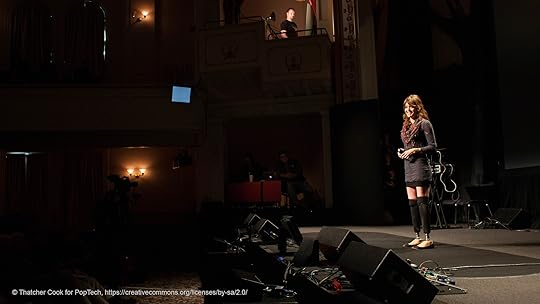Nancy Duarte's Blog, page 21
August 25, 2017
Master the Struggle of Working with Executives on Presentations
Executives are b-u-s-y and working with executives on presentations is not e-a-s-y. Their calendar is often fractured into a million pieces, so they have only shards of time to think about their next talk. If the Vulcan mind-meld were a real thing, building a talk for them would be easy-peasy, but it’s not.
Instead, you’ll have to anticipate their next move and brace to work in fits-and-starts. No matter how prepared you are, your exec will still have that epiphany in the shower the morning of their talk. Fortunately, over time, we’ve fine-tuned a few tips that have helped us wrangle crazed leaders:
Know the audience: If you’re the communications or marketing person, you may have been the one who felt the gig was important for the exec to deliver. Either way, it’s your job to channel the audience at every phase of this project. When you brief the exec about the talk, make sure you give them all the background on the audience and have them agree to the audience journey. The first slide of your working-deck should have a Big Idea and the audience journey emblazoned on it. It should look like this:
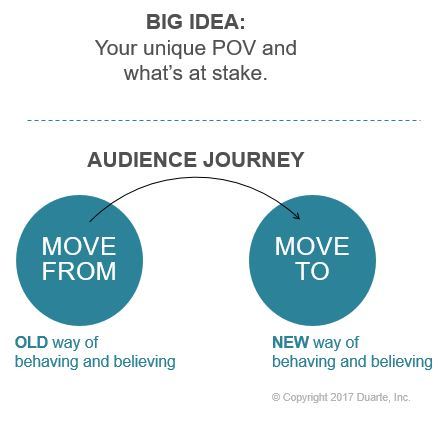
Use the audience’s journey as a guidepost and bring the executive back to it as a centering device—because they’ll want to chase a hundred other shiny objects that aren’t relevant to this audience.
Know the executive: In many ways, marketers are the company’s (and executive’s) folklorist. Collect a bevy of stories and experiences that the exec can pull from to add emotional appeal to their talk. When your executive delivers stories authentically and those stories match the audience’s perspective, the audience forms a bond with your brand that no other communication device can achieve.
Constrain their whims: Sometimes an exec doesn’t understand how much effort things take. They may ask for something that to them seems like a simple request, yet it might cost days to execute. For instance, an offhanded comment like “toss a chart in here from our Asia office,” could mean spinning five people in your market insights group for two weeks. In reality, the chart may not be central to the point and rather just a curiosity. Don’t hesitate to push back so they understand the impact of the request and can determine if it’s worth the effort.
Create a presentation war-room: If possible, set up a visual working space close to the exec’s office so when they’re moving from meeting to meeting they can see a sonogram of their talk taking shape.
We learned this first hand in our early days at Duarte. Instead of launching into slideshow mode, post the presentation on the wall, or open your deck in slide-sorter mode so the exec can see the meta-structure. This way, they’ll be comforted to see that their pet slide is in at slide #9 and will calm down enough for you to walk them through what you’ve built. Have the main structure run horizontally across the top so they can skim the top points and then have your supporting points at the bottom. This format was the inspiration for how we built our training courses at Duarte for writing presentations.
Writing talks for some execs is exhilarating while working with others will leave you wanting to peel your fingernails back. Empathy plays a big role in determining the ultimate experience for both parties. Execs need to empathize with what you’re doing, and you need to deeply understand the roots of their behavior and intentionally figure out how you can map to their way of working. Some execs are just mean, but most aren’t. If you give them a small window into your world, they’ll work to make you both successful.
The post Master the Struggle of Working with Executives on Presentations appeared first on Duarte.
August 18, 2017
Big Meeting Coming Up? Close the Slideshow; Pick Up the SlideDocs
Presentations have long been a staple in meetings. And, like everything popular, they’re also getting some backlash. Does a presentation actually make a meeting better, or can it make the meeting experience worse? For internal meetings where the goal is to build consensus, consider turning off the projector.
As an alternative to presentations, Amazon starts all its meetings with a 6-page memo. Amazon contends that memos better foster agreement and solidarity through well-informed conversations that a wide range of people can participate in.
When you’re having a meeting where you need to foster consensus – try doing something similar to Amazon: distribute a short document with helpful information about the subject-at-hand, which people can take the time to read before discussions begin. Giving people info they can read at their own speed is helpful, since studies show people can read two times faster than you speak when you present. With a memo, everyone benefits: attendees can take in your important information before you begin a dialogue, and you don’t lose listeners while they are trying to process and respond to what you’re saying as you stand and ramble in front of a set of slides.
Text heavy documents are one way to get information across at a meeting. But there’s also an alternative that doesn’t rely on slides: Slidedocs are tangible documents that pair words and images to deliver and clarify information. Slidedocs are handed out and read, not projected and watched.
We contend that meeting memos actually benefit from being more visual than word-dense. Research shows that using visuals boosts retention. According to John Medina, author of Brain Rules, “We are incredible at remembering pictures. Hear a piece of information, and three days later you’ll remember 10 percent of it. Add a picture and you’ll remember 65 percent.” If people can see what you are saying, you’ll end up with a shared understanding. See for yourself by looking at the gorgeous slidedoc we worked on for the Sant Foundation.
Slidedocs differ from slides in the following ways:
Word density: They have about 150-200 words per page (vs. 40 words or less)
Modular bites: Each page or slide is designed to be self-explanatory
Interactive: They can contain links to both internal pages (to jump around to related content) or external sources
Device-friendly: moving through them feels like turning pages of a book.
Skimmable: information and visual hierarchy is well-organized helping readers navigate through the content
Distributing slidedocs ahead of time makes meetings more productive. Here’s why:
They Foster Conversations
If your meeting is to drive consensus, Slidedocs are your friend. They’re well-suited to help facilitate good, meaningful conversations. Slidedocs – when given out 10 minutes before meeting– allow everyone access to the same information, so they can discuss the issue at hand from an informed place. A presentation simply one-directionally presents information to listeners; they’re not intended for navigating back-and-forth.
They Are Designed For Clarity
Slidedocs use a format that is designed for visual clarity and easy processing, and they ensure that your dense and technical information can be studied and understood. Their format makes it easy to intake information, while still allowing for enough word-density for well thought-through insights. People understand concepts and information much better when prose and visuals are paired, so Slidedocs boost comprehension.
They Are Shareable, So They Can Spread
These more text-heavy Slidedocs contain enough information that they can be shared and spread without the help of the verbal stream of a presenter. Slidedocs can get distributed throughout an organization and the great ones breed within an organization, so they live well beyond a specific meeting. They are an excellent tool if you’re trying to create institutional documents post-meeting, or share information with people who weren’t able to attend.
Conclusion
We love presentations (obviously), and we agree that Amazon is on the right track, switching up the meeting format by using a memo. But, Slidedocs are an even better way to go: a perfect marriage of visuals and words that can foster conversation, boost comprehension, and create productive room time during a meeting for consensus.
The post Big Meeting Coming Up? Close the Slideshow; Pick Up the SlideDocs appeared first on Duarte.
August 2, 2017
The Secret to Writing a Call to Action in A Persuasive Speech
 A well constructed and delivered presentation changes minds and ignites action.
A well constructed and delivered presentation changes minds and ignites action.
Yet, there’s a key part of a presentation that doesn’t get mentioned enough—the call to action or CTA—and, a clear CTA creates a critical turning point in your presentation (or any other form of persuasive communications too).
The call to action which comes right before the end of a persuasive speech is where you clearly tell the audience a role they can play after they leave your talk. The CTA gives audience members concrete tasks to tackle, and these tasks are ones that must be completed in order to bring your ideas to fruition. And, it’s a key part of what makes your speech persuasive.
An audience might be thoroughly gripped by your narrative and convinced to believe what you do–but if they leave not knowing what they are supposed to do with your ideas, your presentation will have been–essentially–fruitless.
Because CTAs are such an important part of a presentation, it’s essential to make sure that the one you deliver lands with the people hearing it. The way to ensure that you write a call to action that persuades is to keep in mind that one size does NOT fit all—and you’ve got to tailor your CTAs.
People respond to different types of calls to action based on their temperaments, daily activities, goals, and more. So, it’s important to get to know who is in your audience before you decide how you’re going to deliver their post-talk “to-dos.” Once you do, you can ensure your call actually gets a response.
Who’s in Your Audience, and What Makes them Tick?
 There are four distinct skills your audience brings to help with your CTA: Doers, Suppliers, Influencers, and Innovators. To get your audience to act, your CTAs have to strike a chord and make sense with the skills they bring to the table. Taking action will seem natural for them when they can respond with an action that resonates with them. Audiences have a mix of all these skills, and you should appeal to each of them in your presentations.
There are four distinct skills your audience brings to help with your CTA: Doers, Suppliers, Influencers, and Innovators. To get your audience to act, your CTAs have to strike a chord and make sense with the skills they bring to the table. Taking action will seem natural for them when they can respond with an action that resonates with them. Audiences have a mix of all these skills, and you should appeal to each of them in your presentations.
Getting “Doers “ to Do Something
Doers are the worker bees of an organization. They are the ones that hear what needs to get done – and then do it. Doers don’t shy away from physical tasks, and have the ability to round up the troops to inspire action in others, as well. Doers make an organization run, day in and day out.
If you’re speaking to doers, you’ll want to craft your CTA so that it includes action words that clearly explain what the doers should do. You may want to ask them to assemble, gather, attempt, or respond.
Motivating Suppliers to Share
Suppliers are usually not as action-oriented as doers. However, they have a lot of resources at their disposal – like money, manpower, materials, etc. Because of the amount of resources they have, suppliers have the means to help people move forward. They can get you what you resources you don’t have yourself.
Suppliers in your audience may be execs who could give you staff–or, investors who are trying to decide whether they want to put their money into a venture – or not.
To appeal to suppliers, you need to use different words than you did with the doers, since they’re not the ones that are going to be hitting the ground running to complete tasks. Instead, you’ll want to ask them to share their resources. You may want to use words like acquire, fund, support, or provide. These can help to appeal to the fact that they have something to give in order to make a change happen.
Influencing on Your Behalf
Influencers have the power to sway. They can change the minds of individuals and groups – large or small. Influencers are the people who mobilize others. They also evangelize ideas, and they know how to get people to change their beliefs and behavior.
Many influencers are leaders and others look up to them and follow their advice. Influencers can also be people in the spotlight, who people tend to be examples–like celebrities or public figures.
When you craft a call to action for an audience of influencers, you want to appeal to their ability to appeal to other people. Great call to action phrases for influencers include empower, convert, or promote. Many have social channels where they can share with others what you need for your idea to become reality.
Inviting others to Innovate
The last type of audience member is the innovator. Innovators are people who can think outside of the box when they hear an idea, then think of ways to modify that idea. Innovators have outstanding brains in their heads. They can dream up strategies, clarify perspectives, and invent products. These people can generate something new where nothing existed before.
Anybody can be an innovator. But, often, innovators are founders of companies or creators of new products. They can be engineers, artists, or entrepreneurs; they handle fewer day-to-day tasks and more of the conceptual work.
To get support from an innovator, appeal to their ability to create things. The best call to action phrases for innovators include offers to invent, discover, pioneer, or create. You want to spur an audience of innovators to leave ready to make something new.
Make Taking Action Sound Irresistible
Appealing to what motivates various audience members is important to inspire action. However, to make sure your well-tailored CTAs lands, you shouldn’t end with your call to action. Nobody ever wants to simply be saddled with a lengthy to-do list.
Instead, after you deliver your CTA, paint a picture of what is going to happen for audience members once they complete the requested action. Throwing out a CTA creates curiosity for listeners; they want that curiosity satisfied by understanding what will happen after the action is over. This satisfaction – and a picture of what the future could look like – will inspire people to act.
Alfred Chuang, founder and CEO of Magnet Systems, recently delivered a UC Davis Commencement speech that contained an example of powerful a CTA that describes what will happen if listeners choose to act. Chuang encouraged the audience of engineering graduates to keep working on innovative projects and to accept the power of an immigrant-rick workforce. He ended:
A new world is on the horizon. And it will be more incredible than any of us can possibly imagine. Our greatest innovations are ahead of us, not behind. But we need great engineers to build that world for us. And that’s you. We need you to not give up. Ever. We need you to finish your projects. Done, done, done. We need you to leverage the power of an immigrant-rich workforce. And we need you all to be a little insane.
If you deliver a presentation that is gripping and empathetic, you’ve almost delivered the perfect presentation. All that’s left is including a CTA that clearly explains what listeners could do to help push your idea forward –and an ending that paints a picture of what the world will look like if they help. Then, you can leave your presentation knowing that you’ve delivered a talk that’s going to move people to act.
The post The Secret to Writing a Call to Action in A Persuasive Speech appeared first on Duarte.
June 29, 2017
Movie Magic: How to Sync With Your Audience
 Studies from Princeton professor Uri Hasson show that certain movies can actually synchronize the brains of the audience. The article reports that viewers “tend to blink at the same time,” and that, “Even their brain activity is, to a remarkable degree, synchronized.”
Studies from Princeton professor Uri Hasson show that certain movies can actually synchronize the brains of the audience. The article reports that viewers “tend to blink at the same time,” and that, “Even their brain activity is, to a remarkable degree, synchronized.”
As professional “presentation people,” especially ones who love cinematic presentations, Duarte is always looking for ways to help presenters increase audience engagement and measure the success of their presentations—and this research may help presenters become better at both.
Duarte’s methodology is rooted in time-honored visual storytelling principles captured from both cinema and literature. We know that these techniques work, but research like Hasson’s is beginning to show us exactly how.
You’ve probably experienced the subtle effects of this cinematic synchronicity while watching a great movie, but what about during a great presentation?
Not all movies, it turns out, have the same mind-melding power. Structured movies that use a lot of cinematic devices—cuts, and camera angles, and carefully composed shots designed to control viewers’ attention—do it to a greater extent than movies of unstructured reality.
So, how can this information help you craft a more successful presentation? Most presentations are rooted firmly in reality, but that doesn’t mean that you can’t create a cinematic experience for your audience.
Visual storytelling techniques are intended to help you clarify and control how your audience receives your idea. Just like careful camera work and composition help filmmakers impact their audience, beautiful and thoughtfully designed slides help you achieve the same purpose. Of course you don’t need to treat every presentation like a feature film, but you can use cinematic devices to help you make your talk more impactful, and even more synchronous.

We can see examples of this synchronicity in presentations like Steve Jobs’ 2007 launch of the iPhone. Yes, the audience often laughed and clapped in unison, but applause and laughter tend to be fairly cued and controlled behaviors. However, when Jobs revealed the iPhone’s scrolling feature, the audience let out an audible gasp. This sudden, involuntary reaction is similar to the subconscious synchronicity we see in Hasson’s brain scans. Using techniques like shocking statistics, evocative visuals, and memorable dramatization, Jobs’ presentation was able to keep the audience engaged and synchronized.
We can also see this synchronicity in Martin Luther King, Jr.’s speech during the 1963 March on Washington. King’s speech famously used poetic repetition, pacing, and visual metaphors to engage and electrify his audience. The speech was almost musical, using cadence to create suspense and synchronicity.
These techniques work both ways. As the article states,“If you want people to think alike and be in synch, you could use this tool. If you want people to think differently, you could also use it.” Think about the goal of your presentation. If you’re hoping to have everyone leave the room with a single idea or value, you may want to invest time in making your presentation environment as cinematic as possible. But if you need your audience to leave the presentation thinking critically, you may want to employ the “unstructured reality” approach.
In addition to understanding and encouraging audience engagement, this research may help us learn to measure the success of a presentation, a task that can be difficult or altogether impossible.
Social media provides analytical data in the form of views, likes, and tweets, but it doesn’t apply to every presentation, and still may not accurately depict its success. For unpublicized presentations without an explicit call to action, it can be nearly impossible to gauge how well they’re received. Quantitative data—like applause, audience testimonials, and even water cooler conversation—feels great in the moment, but it can be inaccurate and unwieldy to capture.
In the information age, quantitative data is king. And unfortunately, in the presentation world, hard data is hard to come by. Hasson’s research gets us a little closer to understanding the power behind stories and presentations. Filmmaker Darren Aronofsky joked, “’Soon they’ll do test screenings with people in MRIs.’ The audience laughed, but it didn’t seem like he was joking, at least not entirely.”
Who knows, it may be time for Duarte to invest in an MRI machine. For a good presentation, we’ll try just about anything.
A version of this post first appeared on LinkedIn.
The post Movie Magic: How to Sync With Your Audience appeared first on Duarte.
June 13, 2017
How (and Why) to Tell Killer Sales Stories
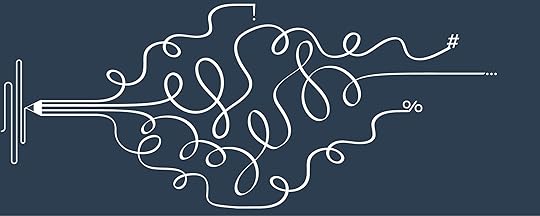 There’s a scene in the British comedy Cemetery Junction that I love because I think it’s a perfect representation of the power of sales stories and storytelling in sales.
There’s a scene in the British comedy Cemetery Junction that I love because I think it’s a perfect representation of the power of sales stories and storytelling in sales.
The scene (set in the 1970s) centers on two door-to-door insurance salesmen, Freddie and Mike, who arrive at a middle-aged couple’s home to sell them a life insurance policy.
Freddie begins his pitch by opening a textbook and reciting facts about the benefits of the policy. Barely a minute in, the husband cuts Freddie off and says, “This is all fascinating, but we’re really not interested.” He then goes on to explain that they would rather use their money to buy a vacation to Spain.
Then Mike steps up to the plate. The more seasoned salesman, he approaches the pitch from a sales storytelling angle. He places the husband at the center of the plot, and asks “Did you fight in the war, sir?” When the husband acknowledges that he did, Mike begins to tell a sad story about the widows of veterans who died without purchasing insurance. “I’ve sat with so many widows who used to be full of life. Their husbands died and within a month they were a bag of bones. They can’t afford to buy food.”
The couple listens to the entire pitch rapt, emotional. Then, seconds after it’s over – they decide the vacation isn’t worth it. They purchase an insurance policy.
This movie scene seems far-fetched, but it’s actually an accurate depiction of just how key sales stories are. The facts that Freddie recited, as convincing they were, just weren’t enough to move the couple to make a purchase (or even listen to a pitch). In contrast, Mike’s use of a personal, emotional story with the potential buyers at the center helped them better understand why they needed the product. It helped him to quickly close the deal.
All stories, including those used by the best salespeople, have a beginning, middle, and end. They are about a person, (or group of people) who encounters obstacles and overcomes them. Like Nancy Duarte explains in her book Resonate, like great works of fiction, great presentations follow the hero’s journey, but they make the audience the hero.
If you work in sales have a set of stories ready to go, can serve as multifaceted tools that come in handy in many parts of the sales process. We interviewed Duarte’s communication strategist, and resident expert, Dave DeFranco about the power of sales stories and got some tips from a pro on when you should use storytelling in your sales. Read on to find out more.
When You Should Use Sales Stories
As a person who works in sales, you should have several dependable sales stories you can rely on during the sales process. Then, you can use them to your advantage in the following scenarios:
Use Sales Storytelling to Make your Presentation More Conversational
When you’re crafting a sales presentation, do you think the facts are enough to persuade people to buy? Don’t be like Freddie. If you deliver rote information, without connecting, the information can fall flat. In fact, presentations without stories often make prospects feel that you are talking at them – not with them – which creates a wall. This ultimately drives them away. You don’t want to drive them away, do you?
There’s a way to craft better sales presentations and make your prospects feel involved. That’ll feel better for both of you. In her book Resonate, Nancy Duarte explains how to make the audience the hero “business leaders need to…place the people in the audience at the center of the action, and make them feel that the presentation is addressing them personally.” Screenwriter Chad Hodge, expands on that in Harvard Business Review, ‘[help] people to see themselves as the hero of the story’ because “everyone wants to be a star, or at least to feel that the story is talking to or about him personally.”
By making sales stories “hero’s journey”s with the prospect at its crux, you can personalize the information you’re offering, make data more understandable, turn facts into gripping plot points, and help make details stick. You can also help make the sales process more of a conversation – and less of a presentation.
DeFranco went on to explain that sales conversations are actually a back-and-forth interaction between the rep and one or more buyers. “Sales needs the agility to use information and stories in a mix of modalities that lets them engage in a way that matches the dynamic of a conversation, so they can better relate to their buyers.”
When You Want to Establish Credibility
If you can convince a prospect to trust you, you have a chance to persuade them that your product is worthwhile from the get-go. (After all, there’s a reason that 84% of B2B sales begin with a referral. Referrals from a trustworthy source mean that a buyer doesn’t have to worry about whether a purchase is a risk or a scam.)
To establish credibility, start your sales pitch by telling stories that feature previous successes. Prove your product is worth the investment – because you’ve already delivered results.
In 1970s insurance sales, salesmen like Mike told sales stories about widows who wished they’d bought insurance. Today, businesses even include customer success stories on their website so they can immediately and conveniently show the public that their products have led to successful results.
In an interview with VoiceAmerica Business Channel, business storytelling expert and author of Putting Stories to Work Shawn Callahan succinctly sums up the importance of using former sales stories to establish credibility. He explains, that a sales story “demonstrates that you, first of all, understand what their needs are– that you’ve dealt with them before and that you’ve successfully helped somebody through the process.”
According to DeFranco, stories don’t only help buyers see that what you’re selling works. They also show that you’re a knowledgeable and trustworthy expert. Sales storytelling shows that you know the ins-and-outs of your company and its history. That you’re armed with sufficient knowledge to be trusted.
Use Sales Stories to Handle Objections
Everyone wants their sales processes to go 100% smoothly 100% of the time. Unfortunately, however, that’s just not realistic. (After all, maybe a couple thinks they would rather go on vacation to Spain than spend money on your product.)
One popular sales storytelling technique for objection handling is called “Feel, Felt, Found” — a central strategy in Apple’s Genius Training manual.
During “Feel, Felt, Found,” you:
Acknowledge how a prospect feels when they convey any objections
Relay a story about how a former customer felt a similar way
Wrap the story with how that customer “found” their solution by purchasing your product.
The “Feel, Felt, Found” method works because it starts by building empathy. Then it relays a digestible, tangible anecdote that feels relevant and helpful. It encourages a prospect to come over to your side (and buy).
Garin Hess, CEO of Consensus, describes the “Feel, Felt, Found” sales storytelling technique by calling it “verbal judo.” He says:
“When we get an objection in sales, instead of resisting, we need to move right with it. An objection necessarily, at first, places our prospect on one side and you on the other. The end goal is to get on the same side, and resistance keeps us on opposite sides… The key to effectively using this framework is to be sincere… You are there to help them solve a problem, not to get the deal. If you solve their problem, they will buy. Using Feel, Felt, Found as verbal judo will take the opposition out of the objection and help you move to a more collaborative discussion to build the right value.”
What Kind of Sales Stories to Use
Now that you know where you can use sales stories, it can be important to build up an arsenal of stories. These can be deployed when you’re trying to sale. Here are several types of stories to have in your back pocket to use when you’re convincing a prospect to buy:
Previous customer success stories: As mentioned above, stories of previous customer successes can be a powerful tool. They can convince a prospect that they need to purchase what you’re selling. A study by Gartner showed that 70% of executive buyers believe customer stories are the best way to differentiate a company from its competitors. This means that if you’ve memorized and rehearsed tales of how you’ve led your previous customers to success, you’ll probably end up bringing in more new customers.
Personal anecdotes: Sales people can use personal anecdotes to create common ground with the people they are selling, too. The common ground between sellers and buyers creates empathy. This naturally creates a feeling of trust in the human brain.
Company failures: It might seem counterintuitive, but telling failure stories is actually an effective way to sell. Failure stories can call attention to instances in which your company has grown and improved. It can also make you seem more credible and honest. Aaron Kotick, Managing Director of Deal IQ Inc. and former president of Fusion Learning, believes in the power of failure stories for sales. He explains, “Failure stories are a great way to build empathy – nobody likes to fail, and people feel for you when you tell one. It’s a way to build trust and connections.”
Selling an outstanding product or service seems like it should be simple. Approach prospects with impressive facts and numbers (like Freddie did in Cemetery Junction). In no time, your buyers will be handing you a check! In reality, however (as any sales professional knows), selling isn’t such a simple science. One of the most effective tools for optimizing the process is sales storytelling. Sales stories paint sales people as credible experts. They make information relatable and engaging. And, they provide inspiration to make a person take action. If you’re in sales, step away from dry presentations and pitches filled with data. Start building a repertoire of sales stories to use when you want someone to buy. You may just find that your sales process is smoother, more effective, and also more enjoyable than ever before.
The post How (and Why) to Tell Killer Sales Stories appeared first on Duarte.
May 25, 2017
Why Will Ferrell’s USC Commencement Speech Was a Grand Slam
Commencement season is upon us and you know what that means. Celebrities, statesmen, and scholars across the world are delivering words of encouragement as graduates cross school stages to receive their diplomas. And we’re watching the videos.
There have been lots of great commencement addresses so far this year – but there was one speech, in particular, that’s become a sensation: the address given by Will Ferrell at the University of Southern California commencement on May 12, 2017.
Sure, we all agree that Will Ferrell is hilarious, but what is it about his speech that’s caused it to garner more than 1.9 million YouTube views in mere days and get press attention from outlets ranging from TMZ to Time, Maxim to MSNBC?
We analyzed Ferrell’s speech and found he had shaped his address the way the best communicators do: in a way that would resonate with audience members.
Ferrell wanted his speech to both congratulate and inspire the graduates listening to him; he wanted them to believe in their own ability to build a future like his, despite the fact that they might not know what they want to do right now.
Ferrell’s attempt ended up being a grand-slam: his speech inarguably inspiring and motivational – and it resonated not only with the people in the audience that day, but also a global audience who’s had the chance to take it in via the Internet.
Here’s how Ferrell’s speech smartly uses powerful presentation strategies in order to entertain, grip, persuade, and ultimately make an impact:
He Created Common Ground with His Audience
It wasn’t hard for Will Ferrell to find common ground with his listeners: he, too, had graduated from USC in 1990. Ferrell made that known from the get-go, telling his listeners:
“It is incredibly surreal, one might even say unbelievable, that I get to deliver this address to you. As a freshman in the fall of 1986, if you were to come up to me and say that in the year 2017 you, Will Ferrell, will be delivering the commencement address for USC, I would have hugged you with tears in my eyes… “
By telling the graduates that he was also a USC graduate, he made it possible for his audience to relate to him and to trust him. At Duarte we’ve experienced how much closer you can get to your audience using common ground, even when you speak to a large audience. In her book on persuasive presentations, Resonate, Nancy Duarte sums up the importance of creating common ground:
Creating common ground with an audience is like clearing a pathway from their heart to yours. By identifying and articulating shared experiences and goals, you build a path of trust so strong that they feel safe crossing to your side.
Will Ferrell’s establishing common ground helped bridge the gap between the incredibly successful celebrity, and the newly graduated students ready to embark on their journey in the adult world.
He Told a Story
Storytelling is a powerful tool. Ferrell used it masterfully by making the most of his speech a story about his time at USC. He weaved a tale about how he went to school to get a degree in “Sports Information” – but he wasn’t sure what he wanted to do professionally (maybe, sportscasting?). However, while at USC, he began to develop an interest in comedy when he played a practical joke on an intimidating professor — who ended up loving the joke and asking him to do it again. Ferrell explained that his experience at the school sowed the seeds of his desire to entertain – and slowly but surely, he was able to build a career that afforded him success.
When you’re speaking to an audience, using stories is a great way to grip people: you entertain and leave them wanting to know what comes next.
Additionally, storytelling is an incredibly effective way to get people to hop on board with your message. Stories literally physiologically change peoples’ minds, which helps them feel like they can empathize and trust in the information they are hearing. Jonathan Gottschall, the author of The Storytelling Animal, explains, “When we read dry, factual arguments, we read with our dukes up. We are critical and skeptical. But when we are absorbed in a story we drop our intellectual guard. We are moved emotionally and this seems to leave us defenseless.”
By structuring his speech as a story, Ferrell helped ensure his address wasn’t a snoozer. He also made sure that the graduates were ready to believe his important closing message:
“To those of you graduates sitting out there who have a pretty good idea of what you’d like to do with your life, congratulations. For many of you who maybe don’t have it all figured out, it’s okay. That’s the same chair that I sat in. Enjoy the process of your search without succumbing to the pressure of the result.”
So they left feeling hopeful and empowered.
He Used Contrast
Another way that Ferrell made his speech so darn entertaining was by using contrast. To keep listeners hanging onto his every last word, he contrasted the “Will-that-Was” (a student at USC who worked in the humanities audiovisual department) and the “Will-that-Is” (a former SNL actor who created Anchorman, Old School, and is now receiving an honorary doctorate from a world-class university).
Contrast is a tool that creates tension in speeches. It creates a gap between two areas – and then it gives the speaker the opportunity to deliver the solution that will bridge that gap. Duarte explains, “Your job as a communicator is to create and resolve tension through contrast. Building highly contrasting elements into a presentation holds the audience’s attention. Audiences enjoy experiencing a dilemma and its resolution…”
By contrasting his days as a student and his days as an entertainer, Ferrell was able to reveal to the audience how he moved between the two. He was then also able to explain to graduates that they, too, will be able to do something similar.
He Made the Audience the Story’s Hero
Ferrell told his own personal story in his speech. However, he made sure to place the listeners at the center of that story. In fact, as he began to tell the narrative portion of his address, he switched to the second person, directly saying,
“You are the graduating class of 2017. And by every statistical analysis, you are collectively considered the strongest class ever to graduate from this university. All of you have excelled in various courses of study.”
Ferrell used his own examples to illuminate how the graduates could expect to navigate through their own life’s journey, now that they are embarking on a similar quest.
By making the audience the hero of the story and centering the through-line on them, a speaker or presenter is able to make the message feel more relevant and meaningful to listeners. Ferrell ended his speech explaining to the graduates how they could expect their hero’s journey to end:
“Trust your gut, keep throwing darts at the dartboard. Don’t listen to the critics – and you will figure it out.”
Commencement addresses are usually inspiring – but Ferrell really knocked it out of the park when it came to delivering a speech that transformed his audience. After looking at the powerful persuasive tools he used, we can bet that many of them left moved by his empowering and uplifting message. (Or, maybe it was just his very …beautifully… sung rendition of that perennial hit “I Will Always Love You” delivered at the end of his address that really hammered things home for listeners.)
Hear it for yourself here:
You can read the full transcript of Ferrell’s words here.
The post Why Will Ferrell’s USC Commencement Speech Was a Grand Slam appeared first on Duarte.
May 19, 2017
4 Ways to Use Storytelling in Marketing That Have Nothing to Do With Heart Wrenching Videos
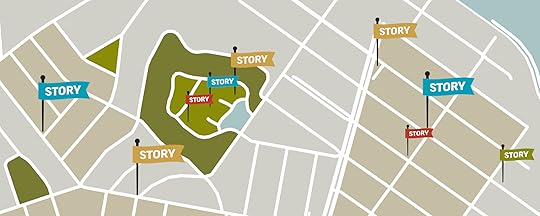
So many of the articles about storytelling in marketing focus on brand storytelling. They often describe the common storytelling techniques that creative teams use to reliably stir up emotion via beautiful advertising videos. Have you ever watched video ads released by Nike, or Google, or Airbnb? I love that stuff. I can’t even help but joyfully tear up every single time I watch Google’s “Reunion” ad.
Fortunately, the positive and empathy-inducing effects of storytelling can also be experienced (without the tears) when you bring storytelling into your organization. Marketers can use storytelling techniques to better understand customers, arm sales teams, get bigger budgets, and even edify a company’s culture.
Use Storytelling to Empathize With Your Customers
Marketers should have a solid foundation of empathy before they try and sell anything to anyone.
Relating to your customer can make the difference between a well-received campaign or a flop.
One of the most conspicuous places we use storytelling in marketing strategy is in creating customer personas. The persona exercise relies on interviewing customers in order to tell accurate and meaningful life stories. We build characters and focus on their frustrations and challenges. Then, we imagine what our companies can do to help them succeed. We want them to be the heroes of their own story.
Why do we do this? In an interview, Duarte’s Chief Strategy Officer, Patti Sanchez provided some insight:
The goal for any marketing or sales activity is ultimately to generate a result – to get your audience to respond to your message and take action on it. But they won’t even look at your message, let alone respond to it if it’s not relevant to them. And to be relevant to your audience you have to understand what matters to them, what they’re struggling with, and show them how your offer helps solve their pain. In short, you have to empathize with them.
According to scientist Dr. Paul Zak, telling emotional and character-driven stories boost the levels of oxytocin in the brain. The result is the feeling of empathy…Science!

Empathy-building can go far beyond persona work in storytelling marketing, though. Author Claire Brooks explains in her book, Marketing with Strategic Empathy. “Storytelling which evokes empathy for customers is proven to be a powerful way of communicating strategy to employees at every level of the organization and inspiring effective strategic action. It should attract as much creativity and investment in time as brand storytelling through marketing communications.”
To that end, she recommends we use storytelling in marketing team persona work and to create some pretty cool customer-simulation experiences:
Installations like “customer rooms” that build out customer archetypes with video, posters, life artifacts, and more.
Consumer documentary videos that tell real-life stories of customers
Designed and delivered storytelling marketing presentations where marketers share customer stories with the team
Arm Your Sales Teams with Stories They Can Really Use
Marketing and sales teams should work together like a hammer and a nail. It’s easy: marketers gather the data and craft stories that customers might like. Then, sales teams pitch the stories to customers who quickly marvel and buy.
However, this beautiful symbiotic relationship between sales and marketing doesn’t always function so well.
Dunh dunh dunnnnh.
Allegedly, according to SOME sales people (not “mine,” of course), the presentations and storytelling materials that marketing teams create are too broad. They don’t appeal to individual customers and are targeted at industries, not people. Accordingly, they are hard to customize enough to convince specific customers. Yikes!
But fret not. There is a right way.
We marketers can help sales teams personalize their pitches by creating overarching stories. We knowingly display the big picture and acknowledge alternative courses within it. Then, sales teams can choose their own adventure. After all, they’re the ones face-to-face with prospects. Finally, we should give them modular sales-enablement presentations that they can customize for each pitch. This is actually one thing we do at Duarte if you want to learn more, download our toolkit.
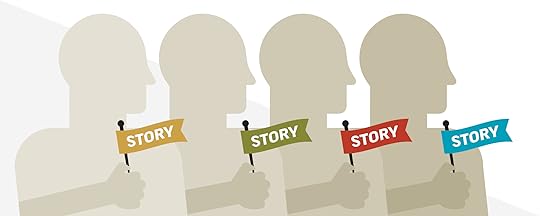
Use Storytelling to Pitch Ideas and Get Budget
Oh, budget. I love you. Yet, you never seem to be enough.
If you’re like me, you usually want more support (read: dollars) behind your projects. You can actually use storytelling to more effectively pitch ideas and persuade execs. In fact, Nancy Duarte, who (not coincidentally) is the CEO of this very company, told me in an interview that,
“Execs love stories that demonstrate bottom-line results. Is there a story about a customer who expanded their contract? If so, why did they? Why did your sales guy close a half a million more? Why did the traffic quintuple on your new site? There’s a story there about how humans changed their behavior and it impacted the bottom line. Tell those stories and lace it with the role marketing played to make it happen.”
Thanks, Nancy! Message received.
The key to convincing execs to up your budget is to prove to them past ROI. You should show just how valuable every dollar you have is. In fact, studies reveal that marketing leaders who were able to prove ROI were 1.6 times more likely to receive a higher budget.
So next time you’re about to rattle off KPIs, take a few minutes to look at the big picture. Then, tell the persuasive story instead.
Use Storytelling to Cultivate Company Culture
Whether you’re a startup trying to create a mythology about your startup, or an established brand whose resilience is linked with trust, your employees have to understand the company’s values and mission. In HBR in 2014, Sanchez published an article called “Why Marketing Needs to Hire a Corporate Folklorist.” In it, she explained, “You could think of this role as a ‘corporate historian,’ ‘official archivist,’ or ‘chief storyteller,’ but I prefer ‘folklorist.’ Folklore, in a cultural sense, is the sum total of anecdotes, artifacts, and rituals that unite a group of people — the common language that creates shared meaning.”
If you want your team to feel loyal, you’ve got to give them an option to be part of something bigger than themselves. Of course, there are certain types of stories that we’re used to coalescing around. According to global brand strategist Fritz Grutzner, two of the most common are the foundation story and the crisis story.
The foundation story is pretty self-explanatory. It is told often and reminds people both why the company was started and now exists. For instance, Dropbox’s foundation story is about founder Drew Houston’s bus trip from Boston to New York. On the bus, Houston realized he forgot his USB memory stick. He had no access to his coding projects. 5 hours wasted! Gah! Right then and there, Houston decided to create a company that would make accessing and transporting data as easy and convenient as possible. And he did.
The crisis story shows how a company dealt with a time of crisis. These stories are great to tell your team when you’re trying to get through the next tough time. They remind workers of the resilience and strength of a brand. They also instill pride. One famous crisis story is that of juice company Odwalla. In 1996, Odwalla was linked to an E.coli outbreak. The outbreak killed one person and made more than 60 sick. In response, CEO Stephen Williamson publicly apologized, recalled the products, and agreed to pay all victims’ medical bills. While this was a significant setback for the company, it survived. Then, it went on to be bought by Coca-Cola for $186 million just 5 years later.
If you’re interested in these kinds of stories — or about how companies like Apple, Starbucks, and IBM use storytelling (and speeches, ceremonies, and rituals) to rally teams and customers, you’ll definitely want to read Nancy and Patti’s book, Illuminate.
Getting your marketing team to tell and spread these stories is critical to getting your team moving in the same direction. Storytelling in marketing teams doesn’t only create a company culture of pride and instill similar values that employees work towards. It also gives marketing team members a similar language to work with. This makes the work process smoother and easier. It also results in more cohesive products.
Storytelling in Marketing; Not Just for Advertising
So did I tell you? There so much more to storytelling in marketing than creating an ad that makes you want to call your grandparents. Or save the world. Or cry. Try to start using storytelling in unexpected places. Use stories to speak to your bosses and team members, and you may just discover that the power of stories and their applications are far beyond what you initially imagined. And now, here’s that Google Reunion video you’ve all been waiting to happily sob to.
The post 4 Ways to Use Storytelling in Marketing That Have Nothing to Do With Heart Wrenching Videos appeared first on Duarte.
May 3, 2017
6 Presentation Mistakes Every Professional Should Avoid
 “There’s this one guy at my company who…”
“There’s this one guy at my company who…”
So began my in-flight conversation about presentations and presentation mistakes. This happens a lot. The surprising thing about this conversation was the rest of the sentence.
“…is way too exuberant when he presents.”
Wait, what? Nobody says that.
We talked for a while. I explained how to fix the problem. Then we talked about how rare that problem is.
See, for the past four years, I’ve flown all over the world to bring Duarte methodology to companies via our storytelling workshops.
When I started, I assumed every company would have its own set of problems. So, I began every workshop by asking attendees to jot down presentation challenges at their company. Turns out I was wrong. People across all companies repeatedly make the same presentation mistakes. It doesn’t matter what industry, the age of the company, or the caliber of employees, a bad presentation is bad for the same reasons.
The following list includes all the most common presentation mistakes, which are easy to avoid by the way.
1. Your Presentation Covers Too Much Information (TMI!)
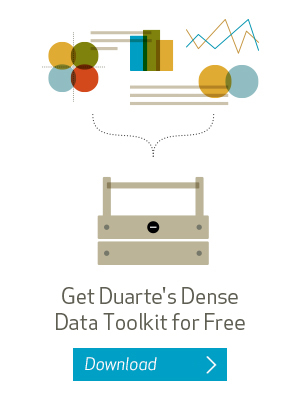
I have facilitated 211 workshops in the past five years.
That’s right: 211 times out of 211. You couldn’t get that many people to agree on what day of the week it is.
It’s difficult to give instruction on exactly how much information you need in a presentation – but it’s probably less than you think. Put simply, the more facts we hear, the less any of them stick. Choose wisely.
A good, yet seldom implemented tactic is to focus on what the facts mean rather than the facts themselves.
Instead of just reciting the results or the data, give me an analysis; explain why something happened, and what the ramifications are in the future. We call that balancing information with insight.
A data presentation I love sharing is David Epstein’s TED talk. He is so good at walking you through only the essential information, then telling you why that information matters.
An excerpt:
“Take a look at the record for the 100-meter freestyle swim. The record is always trending downward [information] but it’s punctuated by these steep cliffs. The first cliff, in 1956, is the introduction of the flip turn [insight].”
2. You Distract Your Audience with Acronyms, Abbreviations, and Jargon

This one is tricky. To save time, most people at most companies have a slew of acronyms they regularly use. Saving time is a good thing, right? But here’s the problem: acronyms only work when everyone’s been brainwashed to memorize them. If you haven’t memorized a term, your brain spends extra time and energy figuring out what it means. That leads to distraction
Example: I sat in on a rehearsal for a company’s big marketing presentation. They kept using acronyms like PPC, but never explained what it meant, probably because they use the term 79 times a day. I, however, don’t live, eat, and breathe marketing acronyms. It took me a few seconds to remember what that meant (pay-per-click).
That might not sound like a big deal, but do the math. The average rate of speech is about 130 words per minute. Five seconds to decode an acronym means I’ve missed out on ten words, basically a whole sentence. Every time the presenter used an acronym, it was the equivalent of me putting on earmuffs for the next five seconds. Don’t do that to your audience. Pretty please. As good as it may seem, I promise, it’s a presentation mistake.
3. Presenting Irrelevant Information Guarantees a Bad Presentation
A couple years back I hosted our 1Day Visual Story workshop for a compliance department that presents to the company’s sales team. I asked them to think about the stakes of their presentation. What is in it for the audience? Almost every single attendee said the same thing: “it will allow us to remain compliant.”
Can you see the problem here? Is a salesperson motivated by the goal of remaining compliant?
So, we stopped and thought like salespeople. Eventually, we came up with different stakes: “it will help us avoid an Enron situation.” That’s something a salesperson would listen to.
Make the audience the hero of your presentation. Everything must be catered to them because if they do not adopt the idea you propose in your presentation, your idea dies. At the very least, consider what motivates them, what they already know about your topic, and what a walk in their shoes looks like.
4. Your Call to Action (CTA) is Confusing or Vague
It is amazing how many presentations, even good ones, end without telling the audience what they should now go do. Or, they do give direction, but it’s vague (i.e. “I need your support,” which, depending on how you hear it, could be asking for money, a pat on the back, or an inspiring cat poster). To fix this, picture your audience loving your presentation. Now that they’re bought in, what specific action do you want them to take when they return to their desk?
The best call to action I’ve seen in person was at a productivity seminar. The presenter asked everyone to pull out their phone, she waited until everyone had done so, then she asked them to schedule a reminder one month from that date. Boom. Call to action, answered.
5. Your Monotone Presentation Style is Soporific

Most of the time, this mistake is paired with another classic: the presenter reading their slides to the audience. Just in case the audience couldn’t handle that by themselves.
Look, speaking confidently doesn’t come easily to most of us (though, shameless plug alert: we’ve got a great workshop if you’d like help with that). It can feel awkward, it can feel scary, it can feel like your audience is judging you. It’s not easy, especially if you’re not a naturally ebullient person. But here’s the deal: if you don’t seem excited by your talk, there’s no chance the audience get excited.
Ridiculous as this feels, one of the best things you can do is record yourself. Pull out your phone, open your voice memo app, and talk about your topic for a minute. Odds are the expressiveness you feel internally does not match how it sounds externally. A monotone presentation is a presentation mistake that pretty much guarantees a bad performance.
6. Your Presentation Lacks a Clear Point or Purpose
In one of my first presentation workshops, I sat down with a participant to help him with his point of view.
“What do you have so far?” I asked.
“The team made a lot of mistakes,” he said.
“That’s not a point of view,” I said.
He looked confused. I explained the difference between a point of view and a fact. Let’s try again.
“The team keeps making mistakes.”
Round and round we went. Did he have an opinion as to how the team could get better? Was there a particular mistake the team needed to stop making?
Eventually, he came up with something. But, for the rest of the day I pictured him going through life making factual, opinion-less statements:
Green is a combination of yellow and blue.
Socks can be made of either cotton or wool.
Not many people speak Greek anymore.
You know what still surprises me the most about this?
He is not alone. An incredible number of people have trouble expressing a point of view. They have plenty of facts. Facts are safe. But a point of view is a huge problem. You give your audience an idea to adopt, that often includes taking a chance that they’ll disagree with you. Use your data to back up the opinion, that’ll keep it dynamic, that’ll separate you from the pack
So, after all those presentation mistakes, we need a happy ending, right? The good news is that bar for presentations in your organization is probably low. If you can avoid making even a few of the very natural presentation mistakes I described, you can easily avoid giving a bad presentation and even stand out as good presenter.
As for that exuberant guy at the beginning of this post? I made that up. Not once have I encountered that person in the corporate world. Odds are that person exists somewhere. If it’s you, consider yourself lucky. You have the opposite issue from most presenters in the world.
The post 6 Presentation Mistakes Every Professional Should Avoid appeared first on Duarte.
April 14, 2017
Improve Your Storytelling Presentation Skills and Get Your Ideas Adopted
Do you remember when you first became aware of climate change? For me, it was 2006. My friends started driving Toyota Priuses, my parents began to buy LED lightbulbs, and I started composting my uneaten food.
I couldn’t pinpoint why there was a dramatic shift towards environmental consciousness at the time until I realized it coincided with Al Gore’s climate change documentary, An Inconvenient Truth, which was released on May 24, 2006.
Look no further than Gore’s talk to see the potential power of presentations—it had an immediate and tangible impact. Studies show that after the movie’s release, the number of people attributing global warming to human activity rose from 41% to 50%. In the year after the movie, there was a 50% increase in the purchase of voluntary carbon offsets in the areas where the movie was played.
Now, Gore’s talk was not the first time global warming was talked about. However, the presentation in An Inconvenient Truth captured the attention of the public because Gore did one thing masterfully: he wove in all of those heavy, scientific details about how humans are affecting the earth with emotional, arresting stories. Gore used storytelling to hook people onto a subject that had previously failed to capture their attention.
Storytelling Presentation Skills Matter
No matter what industry you work in, there’s a good chance that if you’re giving a presentation you have the same goal that Al Gore had: you want your audience to leave understanding and supporting the ideas you just delivered.
Storytelling in presentations is a powerful way to grab attention, hold attention, and to change beliefs because it works in the same way that it does in our favorite books and movies:
Stories build suspense by introducing a hero, a challenge, a journey, and finally, a resolution that delivers the hero into an improved reality. (Didn’t we all read all 7 books in the Harry Potter series because we had to see Harry and his cohorts overcome the evil of Voldemort?)
Stories cause chemical, physical, and emotional responses in listeners. When stories make people feel things like trust or kindness, the brain releases oxytocin, which motivates cooperation by enhancing empathy. This means that stories make people more likely to adopt new ideas and act based on those ideas.
In her book Resonate, Nancy Duarte gives several examples of presenters that mastered storytelling to sway their audiences.
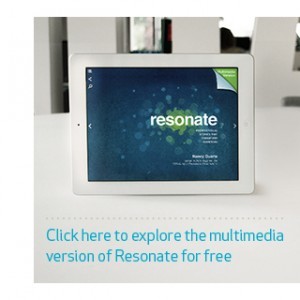 First, tech giant Cisco Systems used to deliver fact-heavy presentations promoting their products. However, when they stopped listing features and started telling stories, they became much more effective and successful. For instance, by telling the story of a small, struggling, local business owner who grew his company and managed it more effectively using Cisco, the company was able to humanize information about technology and make their benefits more relatable.
First, tech giant Cisco Systems used to deliver fact-heavy presentations promoting their products. However, when they stopped listing features and started telling stories, they became much more effective and successful. For instance, by telling the story of a small, struggling, local business owner who grew his company and managed it more effectively using Cisco, the company was able to humanize information about technology and make their benefits more relatable.
Next, Pastor John Ortberg of Menlo Park Presbyterian was masterfully able to move congregation members to believe in the message “people can bring the Kingdom of Heaven to this Earth by showing love” by going beyond simply delivering relevant lines from Scripture, and telling a story about his little sister, who loved a ragged doll so wholeheartedly she was able to convince everyone in her life that the doll was beautiful and valuable.
While these two presenters were very different from one another, they had one thing in common: like Gore in his movie, they both used stories to make their presentation resonate with the audience.
How to Use Storytelling in Presentations to Influence Your Audience
You might be wondering how to craft an inspiring story when your most important content consists of data, insights, and numbers. If you want to build your storytelling presentation skills, you should keep the following rules in mind:
1. Gripping Stories Have a Hero
The most beloved stories in history tell the story of a hero and his journey: Odysseus in the Odyssey, Simba in The Lion King, Luke Skywalker in Star Wars, and Harry Potter in his series et cetera. The hero’s journey is a beloved storytelling device that has a recognizable and easily digestible strucutre. As marketing and storytelling expert Robert Rose explains, “the hero’s journey is a ‘monomyth’ — which is a pattern that many believe can be found in almost every narrative around the world” and that “storytelling across time shares a fundamental structure and can be summarized into this journey.” Duarte elaborates in Resonate.
There is a moment in every story where the character overcomes reluctance to change, leaves the ordinary world, and crosses the threshold into an adventure in a special world. In the special world, the hero gains skills and insights – and then brings them back to the ordinary world as the story resolves.
While you might think that the hero’s journey is just the stuff of books and movies, it actually is an effective device used in a range of media, including advertisements and presentations. For example:
The Budweiser Lost Dog Commercial
In 2015, Budweiser delivered one of its most effective Super Bowl commercials ever. Featuring an adorable yellow lab puppy who runs away from his owner’s truck, gets lost, and then must find his way back home with the help of his Clydesdale horse “buds.”
Amy Purdy “Living Beyond Limits” Ted Talk
In her Ted Talk, pro snowboarder Amy Purdy talks about losing both of her legs to bacterial meningitis, re-learning to snowboard, then eventually medaling the Paralympics. It’s the quintessential example of the hero’s journey.
When you build your presentation’s story, position your audience as the hero. They are the ones who must cross the threshold and into an adventure; you are the one to dare and encourage them to slay the dragons that plague them and their business. Finally, your ideas and the content of your presentation can guide them through their quest to reach a better resolution.
In his presentation, Al Gore made it pretty plain: WE were the people that needed to step up and curb human-related climate change, and we had the power to change the course of what was happening.
2. Use Contrast to Build Tension for Suspenseful Presentation Storytelling
Effective use of contrast keeps people guessing at what’s next. In Resonate, Duarte describes the what is vs what could be framework. First, you paint a picture of the hero’s reality then, you can explain what the future could be if listeners adopt your ideas.
Gore does this particularly well in An Inconvenient Truth – especially because there are some pretty stark contrasts between what the Earth is like now and what it could be like if global warming is unchecked. He discusses the possibility of more damaging hurricanes in the future, the potential deadly spread of infectious disease, and future predator/prey disruptions. (There’s a chance that pine beetles could kill all of our pine trees – and no one wants to see Christmas trees disappear!) One of the things that moved me most in An Inconvenient Truth was imagining what kind of world I would live in if I didn’t adopt more eco-friendly practices like Al Gore suggested.
Beyond Gore’s presentation, many of the most successful speeches have harnessed the power of t contrast. For example:
Martin Luther King’s “I Have a Dream” speech
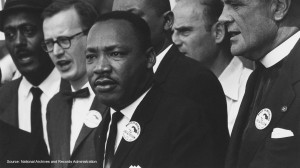 Dr. King starts his speech by explaining that America is racially divided and unjust. He then goes on to explain what the future could look like (his “dream”) if everyone were willing to devote themselves to the cause of Civil Rights alongside him.
Dr. King starts his speech by explaining that America is racially divided and unjust. He then goes on to explain what the future could look like (his “dream”) if everyone were willing to devote themselves to the cause of Civil Rights alongside him.
Viola Davis’ 2015 Emmys Speech
When Viola Davis thanked the Television Academy for her 2015 Emmy, she did a masterful job delivering a powerful, short speech that leaned heavily on contrast to describe the lack of opportunities for women of Color in America versus what could actually happen if writers, directors, and performers focus on creating roles and exposure for them.
The reason that contrast is such an effective method for storytelling in presentations is that it creates a dramatic dichotomy that holds attention and spurs action. By pointing out the gap between what is and what could be, you create a sense of suspense, as listeners wait to hear how they will be able to bridge that gap. For example, in his movie, Al Gore posed that much of New York City (among many other places) could be underwater in the future if we don’t change our habits. I live in New York City! His proposition encouraged me to keep listening to figure out how I could alter what I was doing to ensure that my house didn’t, someday, end up under water.
In Resonate, Duarte explains that the imbalance between what is and what could be “elicits the audience’s desire for a reality different than the current one.” She recommends that you should “pose an intriguing insight that your audience will want the presentation to address. It should stir them up enough (positively or negatively) so that they want to listen intently as you explain what is at stake and what it takes to resolve the gap.”
Ultimately, if you do a good enough job showing how your ideas bridge the gap between the present and the future, audience members will leave believing that they should adopt your ideas in order to move forward. Gore did a good enough job of it that I left his movie and bought LED light bulbs a compost bin with little green biodegradable bags to fill it.
3. Use Personal Storytelling to Generate Empathy in Presentations
So, while you’re not the hero of the story you are telling in a presentation – you are the mentor to that hero – and thus, it’s important for you to incorporate personal stories or anecdotes about your own experience in order to create common ground with the people listening to you. Common ground creates empathy, and this makes people more likely to listen to – and take action after – your presentation.
Storytelling expert and creative writing professor Robert McKee insists that empathy is the most important part of all stories. He explains, “The irreducible step is to connect on an empathetic level… it can’t be just charming. It can’t just be sympathetic. It’s not a matter of likeability. The audience must connect on some subconscious level that this story is about me.”
This means that your stories should help listeners feel things about themselves –not about you.
Use your own stories to become relatable to your audience— you want them to empathize with you becuase they’ll trust you and be more likely to want to adopt your ideas.
Gore’s An Inconvenient Truth presentation didn’t just contain scary information about where the world was heading. It also contained LOTS of personal stories that could help people like me (nobody) empathize with Al Gore (former VP of the US). Some powerful personal stories Gore told include anecdotes about his grade school teachers, sad tales about friends he lost to lung cancer, and more.
To figure out what personal information you have in your arsenal that might be relevant to a presentation audience, it’s important to get to know them first. There are several ways you can get to know your audience:
Split them into sub-segments: Split your audience into sub-segments (by profession, geographic location, age, etc.) then focus on speaking to the group who you are most likely to relate to and win over.
Send out audience surveys: You can send out surveys to audience members long before your presentation to get a better sense of who they are and what they care about.
Build personas: To get to the heart of your audience members, do some research. Ask yourself in-depth questions about them, like: What do they value? How do they spend their free time? What are they afraid of? What are their ultimate goals?
Once you’ve collected helpful information from your audience, look at that information, and see where it overlaps with your experiences. Do you have a story about a similar fear, value or goal? Weave that story into the narrative to show that you’re not just blowing smoke – that you can relate to where they’re coming from. Gore wanted this story to resonate with everyone so he kept his general and relatable to everyone. He spoke about being in school as a child, losing someone he loved, and wanting his home to be safe. Because he picked topics a lot of people could relate to, he successfully built an emotional connection with a wide audience.
There are more great examples of storytelling in presentations and advertisements in the past that included personal, relatable stories in order to persuade audience members. For example:
Sarah Parcak – “My Own Twist of Fate” TEDx Talk
Space archaeologist Sarah Parcak delivered a TEDx Talk to Yale students about finding your career path, and she relayed stories about her own time spent at Yale in order to make her advice relatable and trustworthy.
“Mean Joe Greene” Coca-Cola Super Bowl Ad
In 1979, Coca-Cola hit a homerun with their Super Bowl Ad, “Mean Joe Greene,” which showed a young football fan winning over the famously unfriendly football player by giving him a Coca-Cola. The ad won multiple awards and became a fan favorite – and it was smart because it related a story about football fans, in a context where the company knew many football fans would be watching.
The Importance of Storytelling Presentation Skills
Storytelling in presentations isn’t just a way to keep audience members entertained—although it does do that quite effectively. However, storytelling is also a useful device for creating an empathetic audience that trusts you, a way to keep listeners engaged and absorbed by what you are saying and a motivating factor for action. By combining hard-to-process, dense, and somewhat scary facts with stories in his famous presentation, Al Gore was able to influence not only the people who saw his movie, but also politics and culture – worldwide. By developing your storytelling presentation skills so that presentations feel more like dramatic experiences for audiences than merely recited reports, you may just find that you are more able to effectively convince people that your ideas are worth adopting.
March 31, 2017
How to Master Audience Engagement When You Present
 Don’t panic, but if you want to engage your audience in a presentation, you have a little less than 9 seconds to make it happen. Recent studies show that the average human attention span is 8.25 seconds—if you don’t get listeners engaged that quickly, there’s a good chance you’ll lose their focus to their phone, laptop, reading materials, daydreams, etc.
Don’t panic, but if you want to engage your audience in a presentation, you have a little less than 9 seconds to make it happen. Recent studies show that the average human attention span is 8.25 seconds—if you don’t get listeners engaged that quickly, there’s a good chance you’ll lose their focus to their phone, laptop, reading materials, daydreams, etc.
However, there are a few techniques that can help you hijack a person’s flighty focus and direct it towards hanging on your every word.
Over the years, Duarte’s studied thousands of effective presentations that have kept audiences engaged, engrossed, and even on the edge of their seats. What we’ve learned is that your success in engaging the audience is largely determined by three key elements: how you structure your presentation, how well you understand your audience, and how you deliver the information.
Structure your Presentation to Keep the Audience Engaged
The most crucial step in engaging your audience is taken before your presentation begins, as you’re planning it.
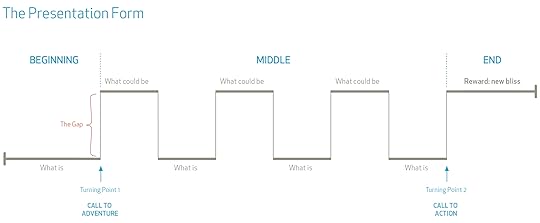 Define the Beginning, Middle, and End
Define the Beginning, Middle, and EndIn Resonate, Duarte’s CEO, Nancy Duarte, explains how most great presentations use the same structure as our favorite myths, movies, and books. Setting up your presentation as a story can help engross an audience, and building the information you deliver into a narrative with drama will keep them riveted – no matter how technical or dense your data might be. Duarte says,
Creating desire in the audience and then showing how your ideas fill that desire moves people to adopt your perspective. This is the heart of story.
The Beginning: The beginning of your story serves as a call to adventure. Set up for the audience a baseline reality and the problems they grapple with today—think of this as what is. The beginning should include concise information about what everyone agrees is true.
The Middle: The middle of the presentation, is generallt longer than the beginning and shows a series of contrasts. It reveals to audience members what could be in the future vs. what is now. Building contrasting elements into your presentation helps hold an audience’s attention: they enjoy experiencing a small dilemma then learning its resolution.
The End: The end of the presentation should leave the audience with a concrete, ultimate sense of what could be, if they are only willing to be transformed. It should describe potential future outcomes with wonder and awe, leaving audiences inspired. You should also use the ending to repeat the most important points from the previous parts of the story.
Use Distinct Turning Points to Guide your Audience
Even if you succeed in engaging your audience, listeners need guidance to stay on track. For this purpose, use two turning points to move them through the presentation and maintain audience engagement.
The Call to Adventure: The call to adventure should come just after the beginning of your story, and move listeners to the middle. The call to adventure puts forth a big idea of what could be, which stands in stark contrast to what is–it quite suddenly destabilizes the status quo.
Your audience can’t help but want to resolve the gap, and they’ll pay attention as you build towards a conclusion.
The Call to Action: To move the audience from the middle to the end of your presentation the call to action must clearly articulate what the audience can do to move from what is to what could be. Include discrete tasks that will help bring the ideas you’ve presented to fruition. After your call to action, your ending will inspire audience members and remind them of the rewards they will reap if they’re moved to act.
Connect with the Audience Before You Present
Even if you craft a spellbinding, dramatic narrative, there’s still a chance that you can lose audience members as you talk – especially if those listeners can’t relate to you.
To ensure maximum audience engagement, make sure you find common ground with the people to whom you’re presenting. Common ground helps create empathy; if an audience can relate to the story you are telling them, they’ll empathize with you and may begin to care.
There are a couple of techniques you can use to get to know your audience before you present, so you can be sure you’re relevant.
Segment the Audience
One of the best audience engagement strategies is to divide the audience into many subsegments. Choose the subsegment which is most likely to adopt your perspective and appeal to them. There are countless ways to segment an audience, including by demographics, job title, geographies and more.
Meet Your Hero

Get really specific and think of the individuals in your audience. Think about what kind of event you’re speaking at, and why most people are there. Then, ask yourself the following questions:
How do they spend a day?
What keeps them up at night?
How do they spend their paychecks?
What is likable about them?
What are their priorities?
What do they already know about what you are going to tell them, and what do they need to learn more about?
How do they give and receive respect?
How do they make decisions?
What biases do they have?
Once you answer these questions, you can better determine what experiences they will relate to. When crafting your presentation, you can rely on those shared on experiences to relay information in a way that resonates. Ask yourself:
What memories, historical events, or interests do you have in common?
What types of outcomes are mutually desired?
Why are you uniquely qualified to be their guide?
What similar journey have you gone on with a positive outcome?
Ultimately, you should communicate from the common ground – you’ll build credibility, and keep the ear of the people that you need to hear you.
Deliver Your Presentation to Maximize Audience Engagement
Even the most well-thought-out, well-crafted, audience-centric presentations can lose people if they’re not delivered well. Remember Charlie Brown’s teacher in the Peanuts cartoons? If you’re not focused on your presentation’s delivery, you may end up sounding just like him to listeners.
If there’s one person you can rely on for effective delivery tips, it’s Doug Neff, Duarte’s content director, speaker coach, and all-around presentation guru. He gave us the following tips:
Interact with the Audience from the Get-go
Remember that your presentation isn’t a speech. There’s no need to simply stand and read information off of a slide or a piece of paper. Instead, use your presentation to engage and interact with the audience. Neff explained that directly interacting within the first two minutes of your presentation “allows you to build a connection with them right up front.” Not sure how to interact with the people listening to you? Neff suggests the following possibilities:
Tell a joke (try to get them to laugh)
Ask them to “raise your hand if…”
Tell a quick story, then “has that ever happened to you? Yeah, I see some heads nodding…”
Ask them to give a round of applause for something…
Match Your Tone of Voice to the Setting
There’s no need to drone on in a monotone, even if you are delivering serious information. However, for optimal audience engagement, you should be sure to match your tone of voice to the setting. In order to choose the right tone of voice for the event, Neff recommends using the dress code as a measure. He explains,
Dress code is one way to gauge your tone of voice: we try to aim for one notch above our audience. For instance, if they’re business casual, we might dress just one more step above that… and we’d match our tone of voice to that same level.
Don’t Stand Still, and Don’t Pace Like a Caged Panther

The amount of movement you do on stage during your presentation can have a huge effect on how well people can pay attention to you. If you stand behind the podium the entire time, you’ll probably be too boring to engage the audience; if you pace like you’re a hungry panther in a zoo cage, you’re going to be distracting. Neff explains that the goal of any good presenter should be to be “purposeful in your movements.” However, you choose to move onstage should help to both engage your audience’s attention and get your message across. The worst mistake to make in terms of movement, according to Neff? “To let your unconscious movements be in control.” So, work on taming those distracting nervous tics before you take the podium.
Don’t Pause to Let Your Audience Members Read Slides
Slides are an important part of your presentation because they help communicate your ideas visually. However, there’s no need to pause and let audience members read them –that will interrupt the flow of your presentation, and distract people from keeping their attention on you. Instead, refer to your slides as you speak – but don’t let them take over. Neff explains, “Slides are background, like set decoration in a play. They should help enhance the message, but not ever be noticed so much that they get in the way. Referring to them is the same thing. Refer to them if that helps your audience better understand them, but not more.”
Let’s face it – going into a presentation can be nerve-wracking. However, if you structure your presentation like a story while keeping your audience’s needs front of mind and you present calmly and confidently, you can eliminate one worry – that you’ll bore the people silly. You can also reap the ultimate grand prize that all presenters seek: that your engaged audience leaves believing in your ideas and ready to act to make them a reality.










